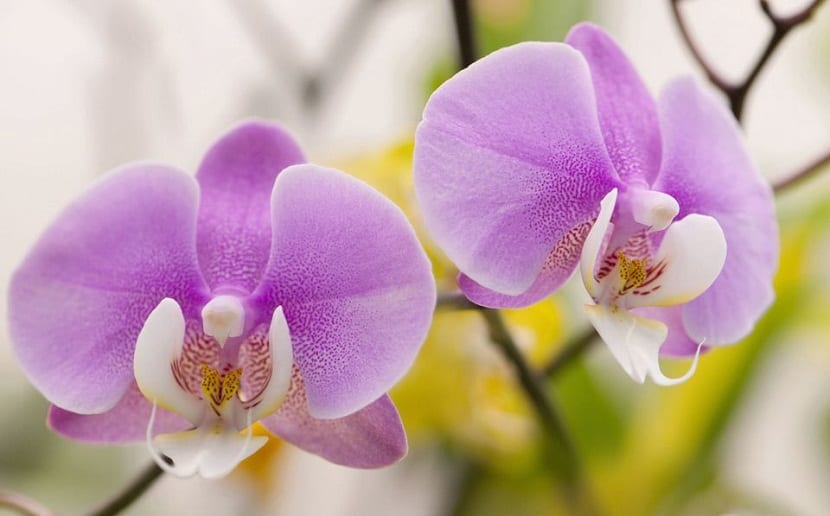One of the orchids easier to grow and care for is Phalaenopsis. The flowering of these beautiful plants lasts many weeks, managing to give it a lasting beauty home and is that once flowering is over, the orchid maintenance focuses on the health of the plants, the good care of the orchid after the fixed bloom, the plant for future blooms and the development of the new bud.
The orchid care after flowering it is similar to when the plants are in flower and thanks to a few tricks you can even get the reappearance of the flower again for a second flowering of spectacular flowers.
Origin and type of orchids
There are around of 60 species of Phalaenopsis orchids in the world, since this type of flower is native to tropical Asian countriesincluding the Philippines, Borneo, Java and other places.
You must know that there is thousands of Phalaenopsis hybridsranging from the marked hybrid, classic white (often called moth orchid) and other types of varieties. The only thing you need to know to be able to grow an orchid in the best way is by following these tips:
Light:
Phalaenopsis orchids are flowers that need low light and they do not like direct sunlight at all, since they can burn.
Fertilizer:
During the growing season, use special orchid fertilizer weekly.
Temperature:
In general, the Phalaenopsis orchid is considered an actively growing plant, which likes warm temperaturesbut they can adapt to the temperature that is usually inside any home, but remember that the higher the temperature, the greater the need for water that the plant will need.
Phalaenopsis orchid care and cultivation
Caring for phalaenopsis orchids carries a set of simple instructions compared to many other orchids, which is probably why this plant it is one of the most commonly cultivated.
Most Phalaenopsis can be forced to flower through the old flower spike, then removing the stem, as some few species will flourish only from old stems that should not be cut.
Our moth orchids The most common are the type that require the old stem to be removed after a secondary flowering and it is only a matter of regrowing plants that are vigorous and healthy, since Phalaenopsis can produce numerous blooms per stem.
Once the final flower is fading, you can ccut the stem back about two inches from the ground With a clean, sharp knife, this will not only improve the appearance of the plant, but it will avoid wasting energy by maintaining a scion that is dead and unable to produce.
Alternatively, you can try to get the old stem to bloom againcutting the stem again in a healthier way.
You can recognize the nodes by the triangular scar shape appearing on the stem and it is that this will bloom again only in the upper part of the green flowers and if it has turned from yellow to brown, cut it five centimeters from the ground and continue with the normal care of the orchid.
Orchids require very specific conditions to flourishmost of which are not found indoors, so if you want to try to force the plant to flower, move it to an area where the temperatures are between a few fifteen to twenty degreesbut be careful where you place it because the plant needs bright, indirect sunlight during the day.
As you will see, this it is a very delicate plantbut if you take our advice to the letter, this beautiful plant It can last you for a long time, so pamper it to the fullest.


